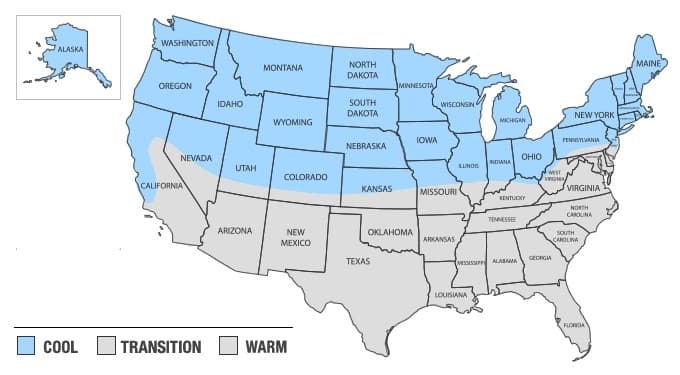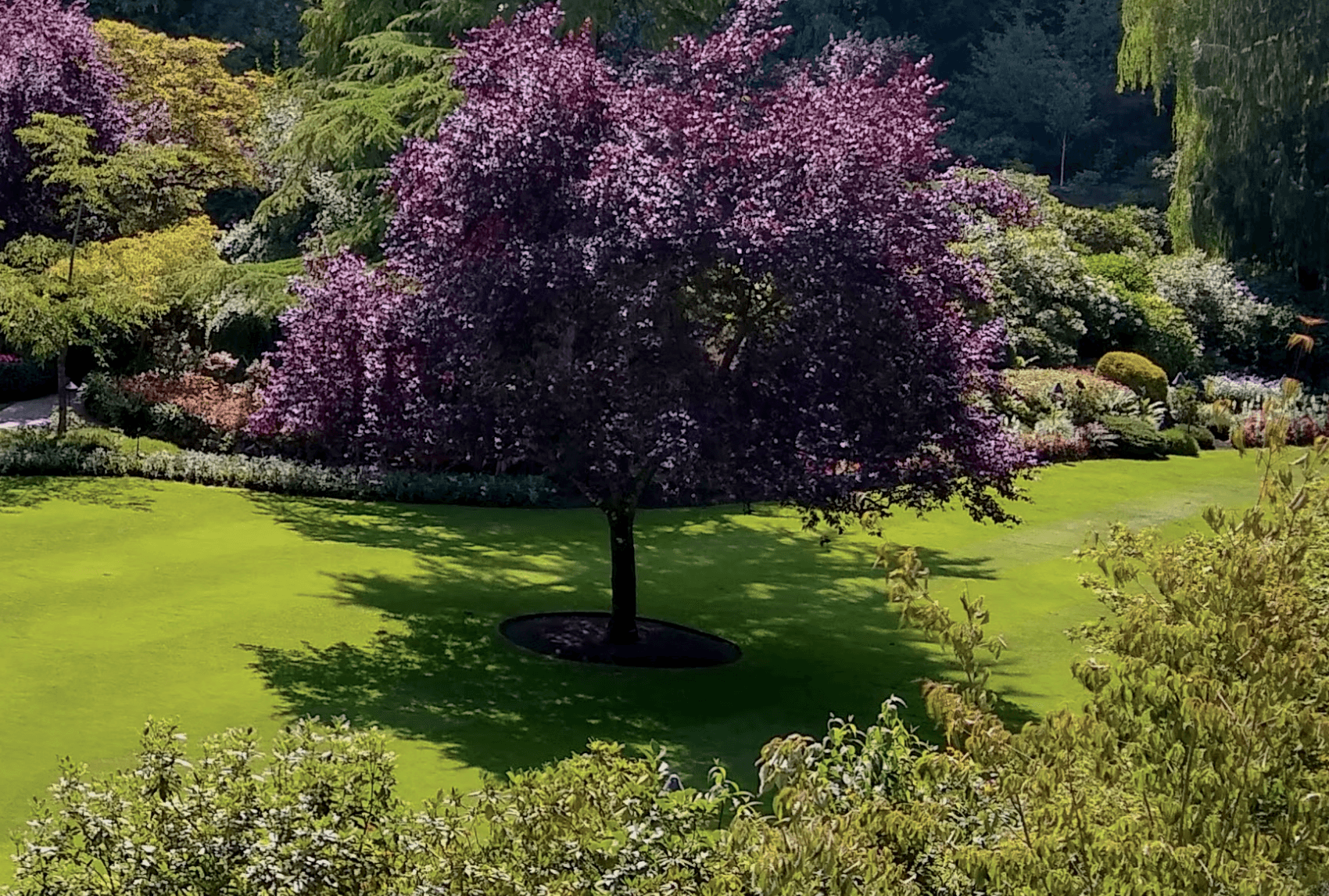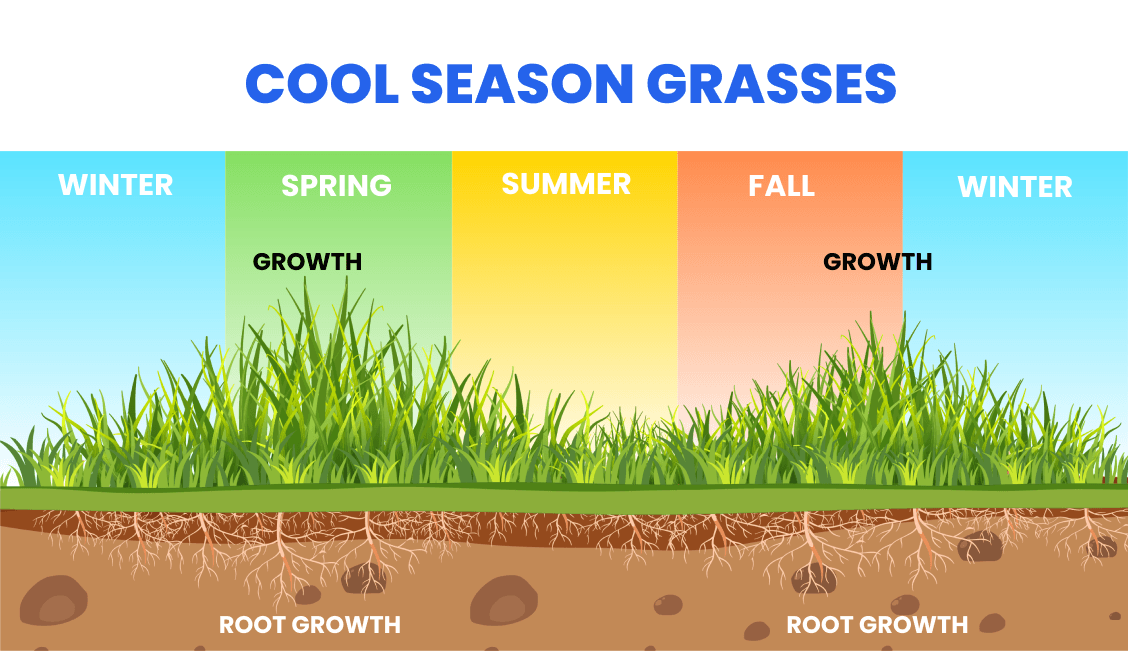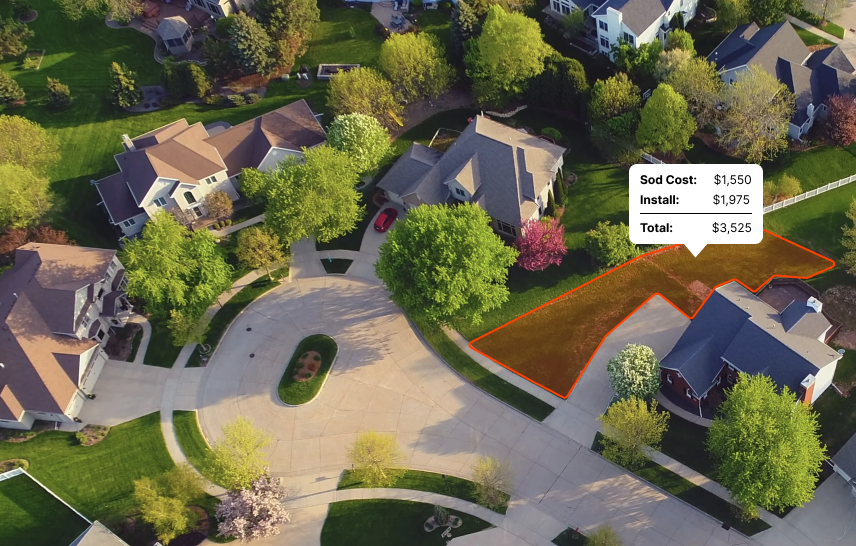It's all about understanding Montana's climate and grass zone. Get that down, and you're all set to pick the perfect grass for your slice of Montana heaven.”
Introduction
Alright, let's paint a picture of Montana. This place is a continental wonderland: summers are toasty, winters come with a chill, and these extreme seasons shape the grass that thrives here. Montana's turf is cool-season grass territory, favoring the types that don't mind a good chill.
Dreaming of laying a Montana lawn? You've got two sweet spots: spring and fall. The cool months give your grass the best chance.
Try to roll out a lawn in the heat of summer, and you'll likely end up with a parched patch. Winter, on the other hand, can leave your grass high and dry, struggling to root in the frozen ground. The lawn heroes in Montana are the cool-season grasses, the ones that stand tall against both icy winters and sizzling summers.
Meet the all-stars: tall fescue, fine fescue, Kentucky bluegrass, and perennial ryegrass. These are your go-to grasses for a Montana-ready lawn. The secret to lawn success in Big Sky Country?
What are the best sod types for MT?
In the world of landscaping, not all grasses are created equal. Each thrives in a specific climate zone: cool, warm, or transition.

Montana, with its cool season climate, prefers a particular set of grasses that relish the lower temperatures. The following sods are the easiest to grow and maintain in Montana:
While it's possible to grow grasses meant for other regions with proper care, attention and timing, these are the most common grasses in Montana for residential lawns.
Level Up Your Lawn Skills
Once per week we'll send you an interview from someone who has mastered the art of lawn care.
Recommended species for shade
Well, fellow green thumbs, let's dive right in. We're talking shade-loving grasses in Montana, a vital topic for those elusive places where sun's golden rays barely graze.
First, high fives to Fine Fescue. These guys thrive in shady areas, you know, the parts of your lawn that seem incurably bald. Fine Fescue are stalwart, a real sod knight, able to tolerate as little as four hours of direct sunlight. Drapes of pine boughs or that annoying neighbor's towering fence? No problem for fine fescue.
Next, we have St. Augustine. Not too picky, this guy. He needs around six hours of sun, but can tolerate shade fairly well. However, keep in mind, St. Augustine is a warm season grass. So if your shaded areas are also exposed to consistently harsh, freezing temperatures, he might not be your top pick.
Third on our hero list, we find Tall Fescue. Robust, vigorous and resilient, this underdog can flourish with only five hours of sunshine. He's got a deep root system, so he's less likely to wilt when summer swelters, and surprisingly frost tolerant too.
Last but certainly not least, Kentucky Bluegrass saunters in. With a need for six to eight hours of sunlight, this might not be the perfect fit for those seriously shaded areas. But if your backyard sees some gentle filtered light, Kentucky Bluegrass could work for you.
Remember, we're in Montana folks. And aside from sunlight, you've got to factor in the wild swings between hot summers and colder winters. It's always a balancing act, but armed with these options, you can set up a lawn that's the envy of your street, shady spots and all.

Recommended for full sun or partial sun
Choosing the right sod for your lawn depends heavily on the sunlight exposure in your yard. Different grass types have varying light requirements for optimal growth and appearance. Assessing whether your lawn receives full or partial sun is essential in selecting sod that will flourish and stay healthy in your specific environment.
Below are some sod options recommended for either full sun or partial sun conditions in MT:
| Grass Type | Sun | Good to Know |
|---|---|---|
| Tall Fescue | Partial | Tall Fescue is adaptable to a range of conditions, including partial sun, and is known for its deep root system and tolerance to drought. |
| Kentucky Bluegrass | Full | Kentucky Bluegrass prefers full sun and is prized for its fine texture, rich color, and ability to recover quickly from damage. |
| Perennial Ryegrass | Full | Perennial Ryegrass thrives in full sun and is known for its rapid germination, fine texture, and bright green color. |
| Fine Fescue | Partial | Fine Fescue is well-suited for partial sun and is appreciated for its fine texture, shade tolerance, and low maintenance requirements. |
What varieties stay green year-round?
As with anything agriculture related, there is some nuance to this question. There are many grasses that can stay green year round in but it depends heavily on your location within Montana as well as any microclimates that may exist.
The following grasses have the ability to stay green year round in Montana:
| Grass Type | Caveats |
|---|---|
| Tall Fescue | It typically stays green throughout the year in milder climates, given that it isn't overly stressed by heat or drought in the summer. |
| Kentucky Bluegrass | It can retain its green color for much of the year when well-maintained, though harsh winter temperatures can push it towards dormancy and a browner hue. |
| Perennial Ryegrass | It can stay vibrant and green throughout the year in many climates, unless conditions are extremely cold or dry. |
| Fine Fescue | It keeps its green color throughout the year in ideal conditions. If the winters are particularly harsh, it may lose some color. |
What is the best time to lay sod in Montana?
Since it is considered a cool-season location, the ideal time to lay sod is in early spring or early fall. These periods offer moderate temperatures, leading to less stress on the sod and providing optimal conditions for root establishment before extreme temperatures of winter or summer. Avoid the summer, as high heat can stress the sod.
As you can see in the image below, you'll notice the most shoot growth (the grass above ground) and root growth in the spring and fall for cool season grases:

Find reputable companies for installing sod in MT
Here are the top problems you'll face when trying to get sod installed by a landscaping company:
- They're not transparent about pricing. You'll often get a quote that's way higher than you'd expect.
- They're hard to get ahold of on the phone or you'll reach out online but won't hear back.
- It's hard to pin them down for a specific date. Because you can only bring sod from the farm when there's decent weather, this causes some delays at times. It also has a short shelf life, so it's important to get it installed within a day or two of delivery.
We've done all the work for you. Click below to get a quote from one of the top installers in Montana.

